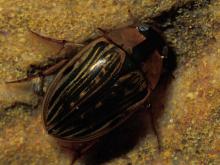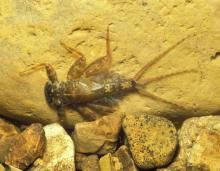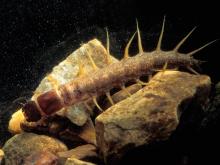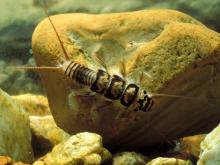Aquatic Invertebrates
Media

Species Types
Scientific Name
Beetles in the family Hydrophilidae
Description
Water scavenger beetles are a mostly aquatic family. They are similar to predaceous diving beetles, but unlike them many have a distinctive spine running down the center of their bellies.
Media

Species Types
Scientific Name
There are hundreds of species in North America.
Description
Mayfly larvae, or nymphs, live from months to years under water, breathing through gills, and the adults fly around in the air, mating, living for only a day or two.
Media

Species Types
Scientific Name
Chauliodes, Neohermes, and Nigronia spp. (in eastern US)
Description
Fishfly larvae look a lot like their cousins the hellgrammites, but they lack cottony or hairy gill tufts along the abdomen, and they have 2 short, fleshy tails at the hind tip.
Media

Species Types
Scientific Name
There are hundreds of species in North America
Description
Stonefly larvae are aquatic and somewhat resemble the larvae of mayflies and damselflies. Their presence usually indicates good water quality.
Media

Species Types
Scientific Name
Tabanus, Chrysops, and related genera
Description
The larvae of horse and deer flies are fairly straight, segmented, wormlike maggots that are tan, whitish, or brownish. They are aquatic or live in mud, and most are predaceous.
See Also
About Aquatic Invertebrates in Missouri
Missouri's streams, lakes, and other aquatic habitats hold thousands of kinds of invertebrates — worms, freshwater mussels, snails, crayfish, insects, and other animals without backbones. These creatures are vital links in the aquatic food chain, and their presence and numbers tell us a lot about water quality.





















